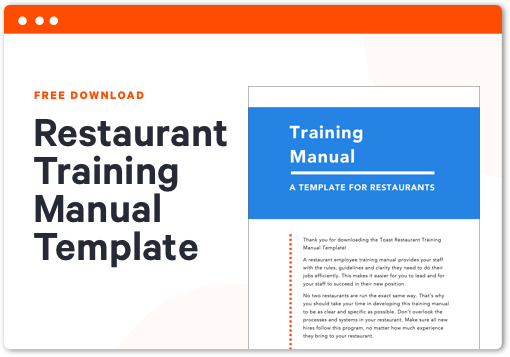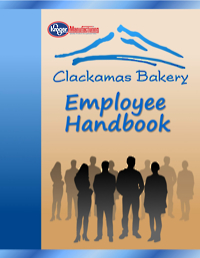Product Type: employee-handbook-template DESCRIPTION The bakery employee handbook template for bakery operations is a Microsoft Word Document - Instant Download. Bakery/Pastry items Beverages for Service Chemicals and Cleaning supplies Paper Goods Kitchen Office supplies Refer to the Vendors List for Ordering: This list will quickly be unnecessary for experienced personnel because they will know which food is ordered from which vendor and when orders are made. It is very helpful for new staff members. Most bakers learn their skills through long-term on-the-job training, typically lasting 1 to 3 years. Some employers may provide apprenticeship programs for aspiring bakers. Bakers in specialty bakery shops and grocery stores often start as apprentices or trainees and learn the basics of baking, icing, and decorating. Employee handbooks are an important tool for business owners. Use this employee handbook template and NFIB’s detailed sample employee handbook to create your own.
Employee Manual For A Bakery Industry
06 JanBakery Operation Safety
Employee Manual For A Bakery Near Me

Bakery Operation Safety The bakery business can be an enjoyable and rewarding profession, but some bakery processes can also be hazardous. Persons who work in bakery operations should be instructed in how to avoid or prevent potential hazards and be properly trained to follow recommended safe work practices. Slips and falls are common bakery accidents due to wet floors, spilled dough, batter, and dry ingredients, as well as uneven or obstructed floor surfaces. Stack materials neatly to keep walkways and production areas clear. Immediately clean up spills and post warning signs when floors are wet or slippery. Use a degreasing solution on...
06 Jan Bakery Operation Safety
Bakery Employee Resume
The bakery business can be an enjoyable and rewarding profession, but some bakery processes can also be hazardous. Persons who work in bakery operations should be instructed in how to avoid or prevent potential hazards and be properly trained to follow recommended safe work practices.


Slips and falls are common bakery accidents due to wet floors, spilled dough, batter, and dry ingredients, as well as uneven or obstructed floor surfaces. Stack materials neatly to keep walkways and production areas clear. Immediately clean up spills and post warning signs when floors are wet or slippery. Use a degreasing solution on oil and grease spills. Gets safety training on use of ladders and stepstools. Slip-resistant floor coverings and shoe soles prevent slips and falls.
Bakery equipment such as moving blades, mixing arms, and conveyors on dough brakes, pie and tart machines, mixers, rollers and dividers pose cutting and caught/crush hazards. Maintain equipment in good condition. Guard moving and sharp parts. Keep equipment clearances to avoid accidentally bumping into moving parts. Use safety devices such as power interlocks, two-handed controls, and emergency-stop bars. Practice lockout/tagout during maintenance and cleaning. Place warning signs on equipment with moving equipment dangers.

Gas and electric heat sources in bakeries pose a fire risk. Know and drill your fire evacuation plan. Keep escape routes clear of storage and debris. Keep fire extinguishers handy; both the ABC Class for general fires and the K Class for kitchen fires. Turn off and unplug electrical appliances when not in use. High temperature cut-off switches prevent equipment overheating. Control grease and oil buildup from donut machines, grills, and fryers with ventilation hoods and fire extinguishing systems.
Boiling water, hot oil, and hot ingredients (syrups, milk) can scald bakery workers. Hot surfaces on warming trays and lights, grills, ovens, cooking pans and trays can burn you. Use heat-resistant gloves or mitts for handling hot trays and pots. Don’t carry hot liquids around the work area and avoid splashes when pouring them. Label and guard hot water pipes and vessels. Know first aid for minor burns: cool the area under running water and wrap loosely in sterile dressing. For major burns, call 911. Maintain a first aid kit.
Breathing flour dust can cause asthma and nose, throat, and eye irritation. Repeated exposure to flour and dough can sensitize skin. Control flour dust with enclosed storage bins, adequate ventilation, and enclosed mixing. Don’t sweep flour from floors; use a high-efficiency vacuum cleaner or wet mopping. Clean work surfaces throughout the day to prevent dough and flour buildup. Use a nuisance dust mask if flour dust cannot be controlled. Gloves and long sleeves protect your hands and arms from dough and flour exposure.
Handling heavy ingredients, food trays, mixing bowls, and cooking vessels can result in back and muscle injuries. Use good lifting techniques or mechanical aids (carts, lifts) when moving heavy objects. Get training on forklifts and mechanical lifts. Secure each load because materials and bowls can cause severe injuries if they fall during transport. Organize your work area and storage to limit reaches. Adjust work surfaces or use stable platforms to get a comfortable working height.
